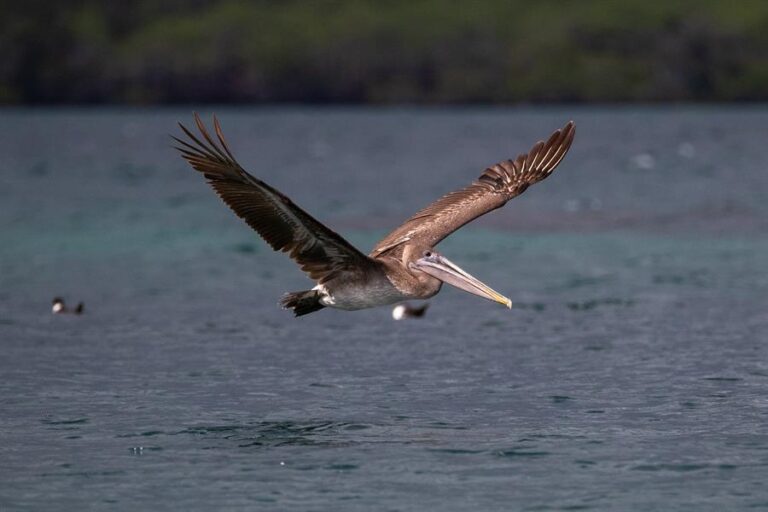
El Niño May Spread Avian Flu?
By Susana Madera
Galapagos Islands, Ecuador, Mar 19 (EFE). –
The paradisiacal Galapagos Islands in Ecuador, one of the best preserved marine reserves in the world, have not escaped the avian flu; a group of researchers is trying to determine how the spread of this disease correlates to the El Niño phenomenon.
El Niño is an irregular, quasi-periodic variation in winds and sea surface temperatures over the tropical Pacific Ocean. It affects the climate of much of the tropics and subtropics.

In Ecuador, it causes torrential rains and flooding along the continental coast.
The phenomenon has most recently affected the South American country since late 2023 when it coincided with an outbreak of avian flu that arrived in the Galapagos from the coast in September.
Strict biosecurity regulations, constant surveillance, and the closure of some islands to tourism have allowed the authorities to contain the spread of the disease in the archipelago, characterized by its rich endemic biodiversity.
Meanwhile, a group of scientists from the Charles Darwin Foundation (CDF) is investigating whether the El Niño phenomenon has impacted the rate of spread of the H5N1 virus, which causes avian influenza.
Infected birds
Gustavo Jiménez Uzcátegui, head researcher of the CDF’s Seabird Project, told EFE that after monitoring and taking hundreds of samples, they concluded that four species of birds had been affected: the red-footed booby, blue-footed booby, nazca and frigate birds.
34 birds were positive for avian flu, but in other dead birds the disease “had not been proven,” said the scientist.
He also noted that “ground zero” was Punta Pitt on the island of San Cristóbal, but there were also cases on the islands of Genovesa, Darwin, Wolff, and Lobos.
Jiménez’s team is currently investigating why the disease did not spread as easily in the Galapagos as it did in mainland Peru, Chile, and mainland Ecuador.
The virus was brought to the archipelago by infected individuals “who may have come to the Galapagos from the feeding grounds,” according to the scientist.
Fulminant disease
Avian flu “is practically fulminant; in 48 hours the animal dies,” Jiménez said, adding that it generally has a greater impact in cold areas.
“The hypothesis we are drawing is that with El Niño, temperatures have risen,” which prevented the virus from being more active and affecting more species, Jiménez noted.
Therefore, he speculated that “maybe the El Niño phenomenon was only positive so that this disease would not be as virulent, as active, as it would have been in a normal cold season.”
Once the warm season and El Niño phenomenon have passed, around mid-2024, this hypothesis will have to be verified with follow-up monitoring.
“The El Niño and La Niña phenomena have been both positive and negative for Galapagos species and habitats for thousands and thousands of years, and these species have evolved with them,” Jiménez said.
However, he explains that the problem arises when El Niño becomes stronger and more frequent due to climate change.

Closed areas
Avian flu is spread mechanically (by moving equipment or by humans) and directly (from a sick animal to a healthy one).
“We have followed up and, with the biosecurity mechanisms that this requires, we have suspended boat visits (to certain areas) because the transport of the virus can occur when red-footed boobies follow the boats and poop on the boats, then passengers can step on it and carry the disease to other islands.”
For this reason, they temporarily closed Genovesa Island, the northern part of San Cristóbal, Punta Pitt, and Lobos Island to tourism.
On Monday, they lifted the restriction imposed last week on land tourism to Punta Espinoza (Fernandina Island) and Bahía Urbina (Isabela Island) after the laboratory ruled out the suspicion of avian flu in those areas, where several dead birds were found.
Previously, “the possibilities of visiting beach areas far from the colonies had been opened a little, with all the technical reports to avoid the transfer of this virus and also to manage tourism in the best way,” said Izurieta.
The park director said that if the latest monitoring of Lobo Island shows a negative diagnosis, they could open it the first week of April, and then Punta Pitt, but everything is still under study. EFE
sm/fgg/mcd



